8 delayed megaprojects blowing budgets in the UK and beyond
Plans plagued by delays and escalating costs
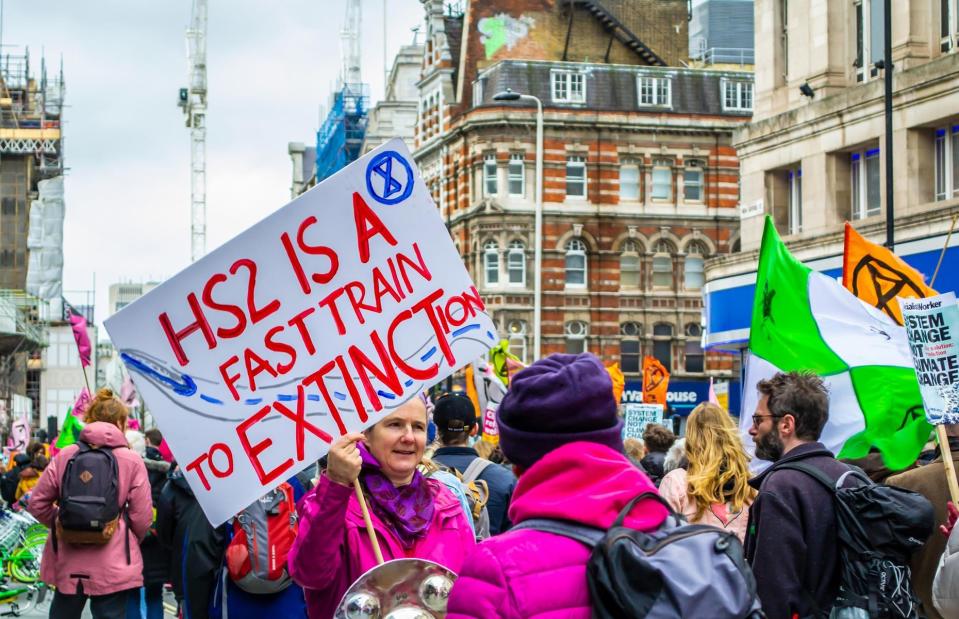
Jessica Girvan/Shutterstock
Projects of immense scale are never easy to execute, so it's no surprise that many are delivered late and massively over budget. With runaway inflation, even the smallest delay can add on serious costs, as seen with many of the flagship megaprojects around the world. Unfortunately, general mismanagement and political disputes also play their part, along with overly ambitious engineering endeavours that struggle to make progress.
From power plants to high-speed rail networks, read on to discover the staggering costs of some notoriously problematic projects and find out why they're running so far behind schedule.
All dollar amounts in US dollars unless otherwise stated.
Navi Mumbai International Airport, India
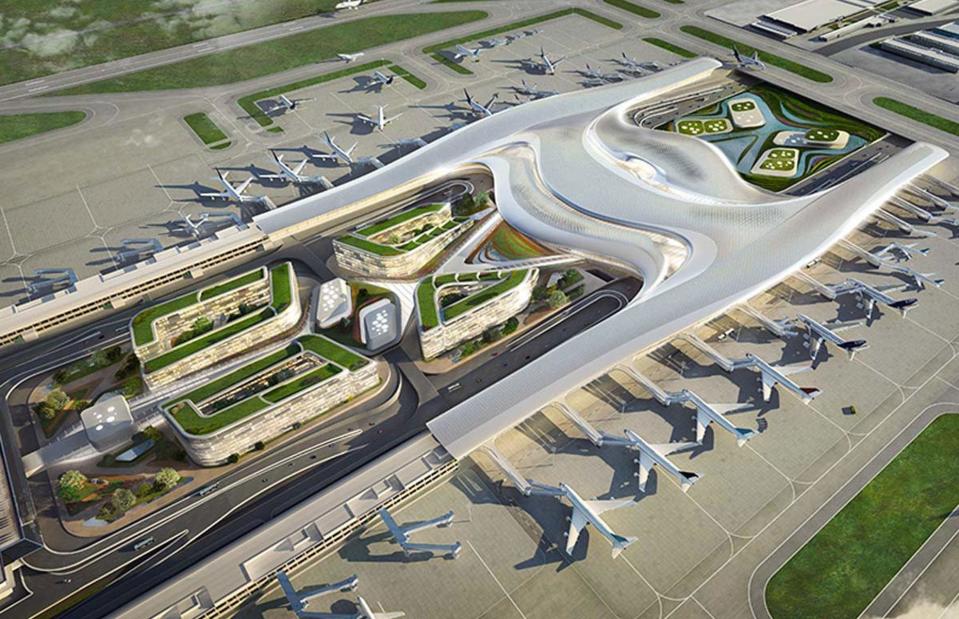
Courtesy Ministry of Civil Aviation/Zaha Hahid Architects
Designed by the world-renowned Zaha Hadid Architects, Mumbai's shiny new international airport was first proposed back in 1997.
The project was eventually given the green light in 2008 but has been marred by conflict, mainly between government departments.
Bitter disagreements over the location, protests from local villagers, and concerns over the ecological impact of the airport that put India's environment and civil aviation ministers at loggerheads are just some of the issues that have delayed the project so far.
Navi Mumbai International Airport, India
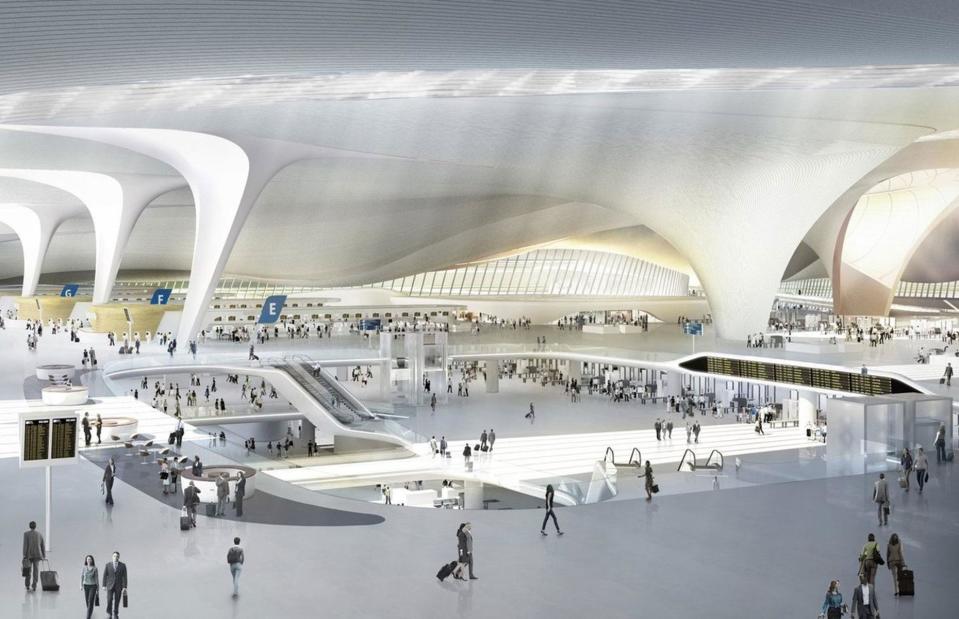
Courtesy Ministry of Civil Aviation/Zaha Hahid Architects
Foundations were finally laid in February 2018, but the estimated phase one completion date of April 2019 couldn't be met.
The state of Maharashtra, where Mumbai is located, hoped the airport would be ready to launch its first flight by December 2020. However, construction of the runway hadn't even started by the end of 2019 due to nearby residents' reluctance to relocate.
Further financial issues have impacted the project's progress, with the original budget of $692 million (£567m) more than tripling to $2.1 billion (£1.7bn).
Navi Mumbai International Airport, India
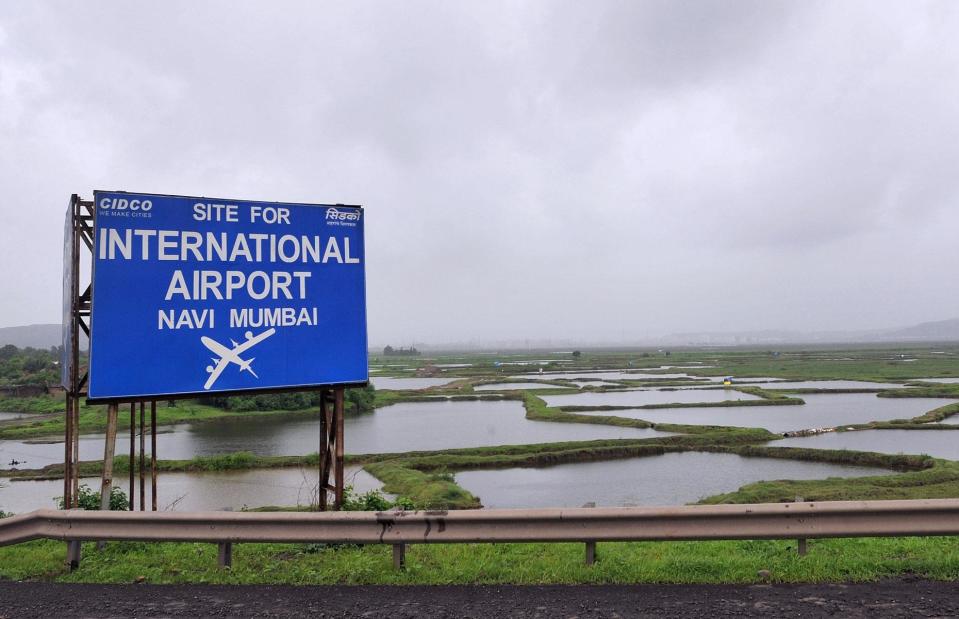
Punit Paranjpe/AFP/Getty Images
The pandemic also put a stop to construction on the site, with the airport's managing director revealing the megaproject would be delayed again. In November 2020, then Maharashtra Chief Minister Uddhav Thackeray set a new completion deadline of May 2021 for the first phase. He also warned that further delays wouldn't be tolerated, with the new airport viewed as crucial for securing future investment in India’s largest planned city.
Despite that sense of urgency, the May deadline came... and went. The most recent time frame suggests the airport's phase one should be fully operational by early 2025, almost three decades after it was first proposed. However, construction of the entire facility isn't expected to be finished before 2032.
Stuttgart 21 rail project, Germany
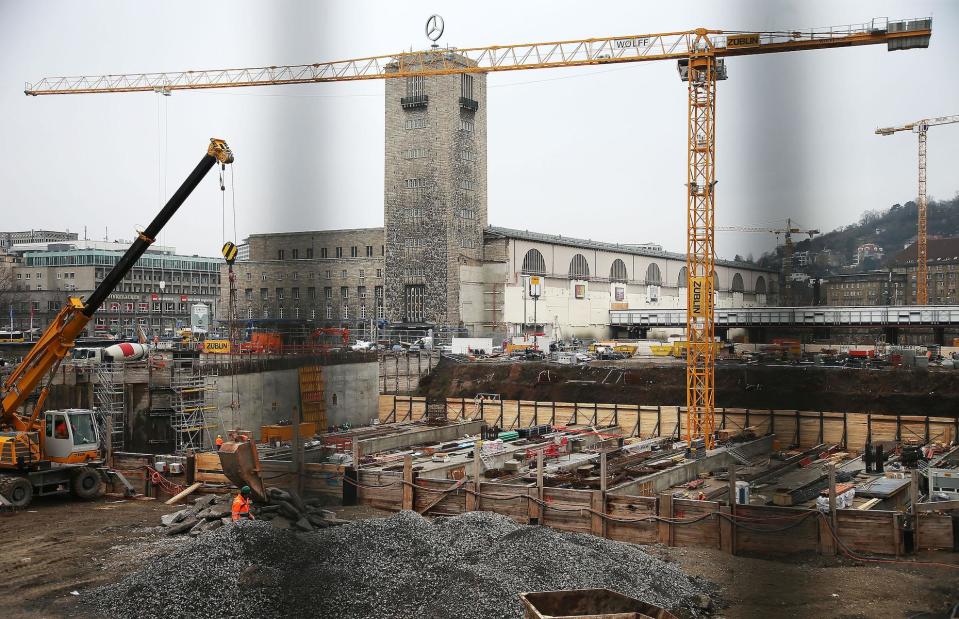
Thomas Niedermueller/Getty Images
Proposed with the intention of overhauling the region's railway system, the Stuttgart 21 project in southern Germany has been controversial from the very start.
The megaproject was officially announced in 1994 with an estimated price tag of €2.5 billion ($2.7bn/£2.2bn), although construction work didn't actually start until 2010.
Stuttgart 21 rail project, Germany
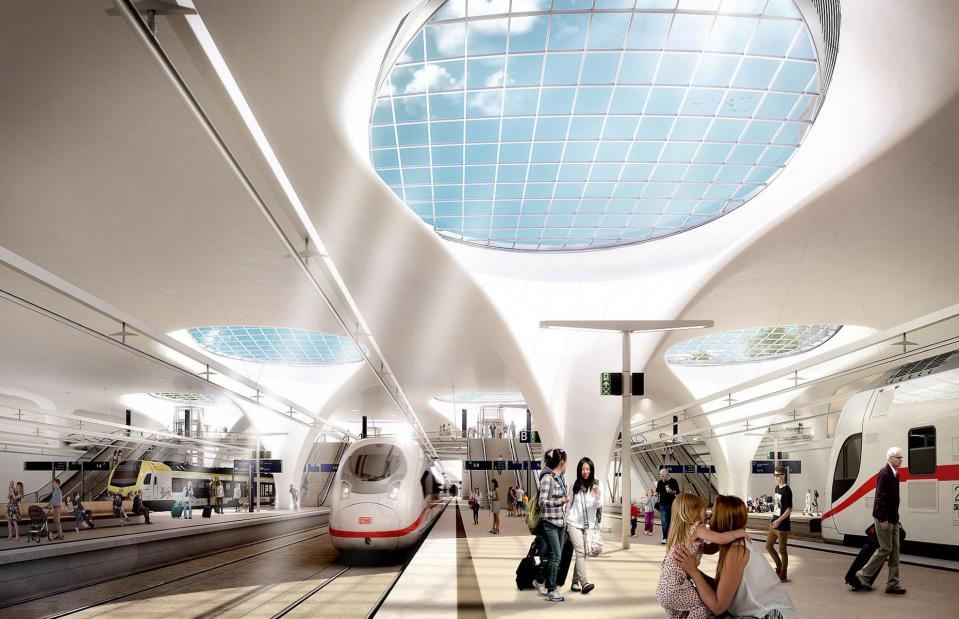
Coutersy ALDINGER+WOLF
Unexpected increases in construction expenses and environmental regulations – including the relocation of thousands of lizards in 2017 – have delayed the construction of the massive new train station in Stuttgart, along with several of its tunnels and about 50 miles (80km) of new railway tracks.
The initial completion deadline of 2019 couldn't be met, and costs have been spiralling out of control. In January 2018, rail company Deutsche Bahn approved a financing framework of €8.2 billion ($9.3bn/£7.3bn) for the project, pushing it €5.7 billion ($6bn/£5.3bn) over the original estimate. This then jumped to €9.15 billion ($9.8bn/£7.9bn) due to higher prices and increased geological risks.
Stuttgart 21 rail project, Germany
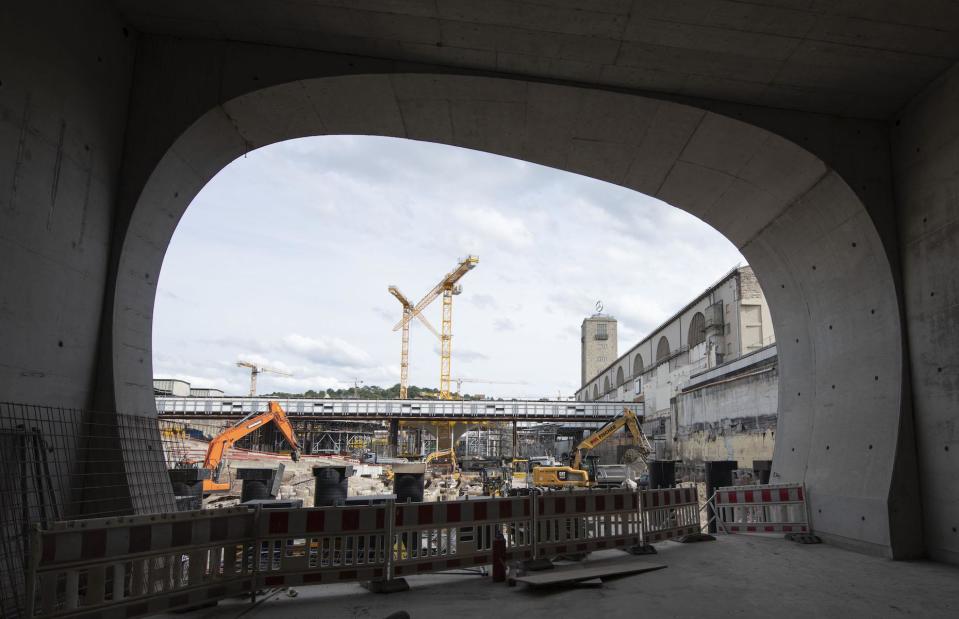
THOMAS KIENZLE/AFP via Getty Images
The project celebrated a significant milestone in 2023: the final tunnelling works were completed in September. However, there isn't much to celebrate. There's uncertainty over whether or not the megaproject is on track to enter operation by late 2025. Deutsche Bahn is expected to make a decision on the opening date in June.
Meanwhile, the project's final cost is estimated to now total more than €11 billion ($11.9bn/£9.4bn), and the Stuttgart Administrative Court ruled in May that the Deutsche Bahn is on the hook to pay for the project's steep cost overruns. It intends to appeal the decision.
Hinkley Point C, UK
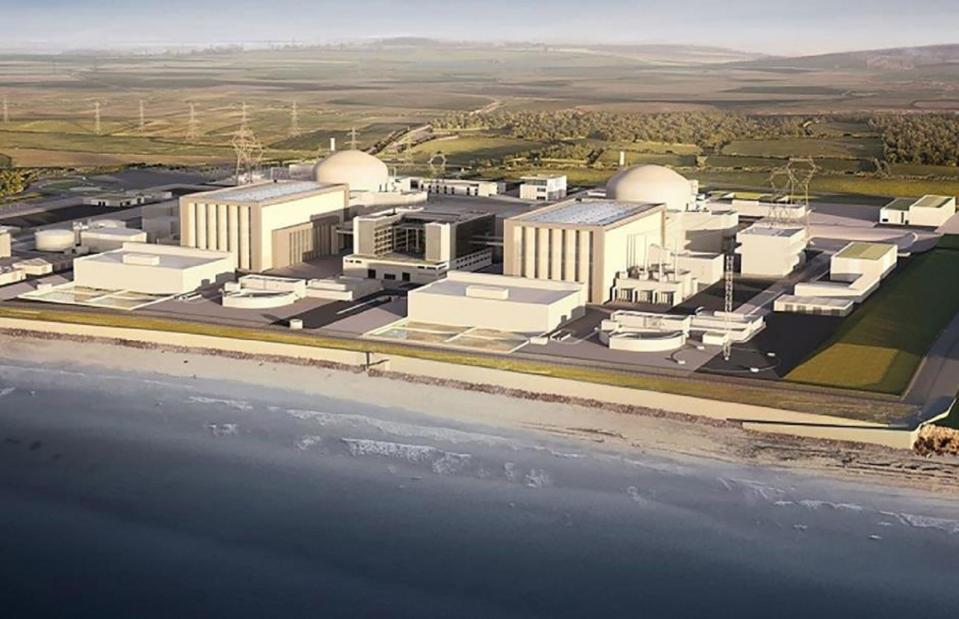
Courtesy EDF Energy
The UK government approved the construction of the Hinkley Point C nuclear power plant back in 2016.
Located in Somerset, England, it has two accolades to its name: not only is it the first nuclear plant to be built in the UK in almost 30 years, but it's also set to be the world's most expensive.
And the budget for this controversial megaproject keeps going up. In 2016 EDF Energy announced the plant would cost £18 billion ($22.3bn). This price tag has been repeatedly revised, with some of the most recent estimates suggesting it could cost as much as £35 billion ($45bn).
Hinkley Point C, UK
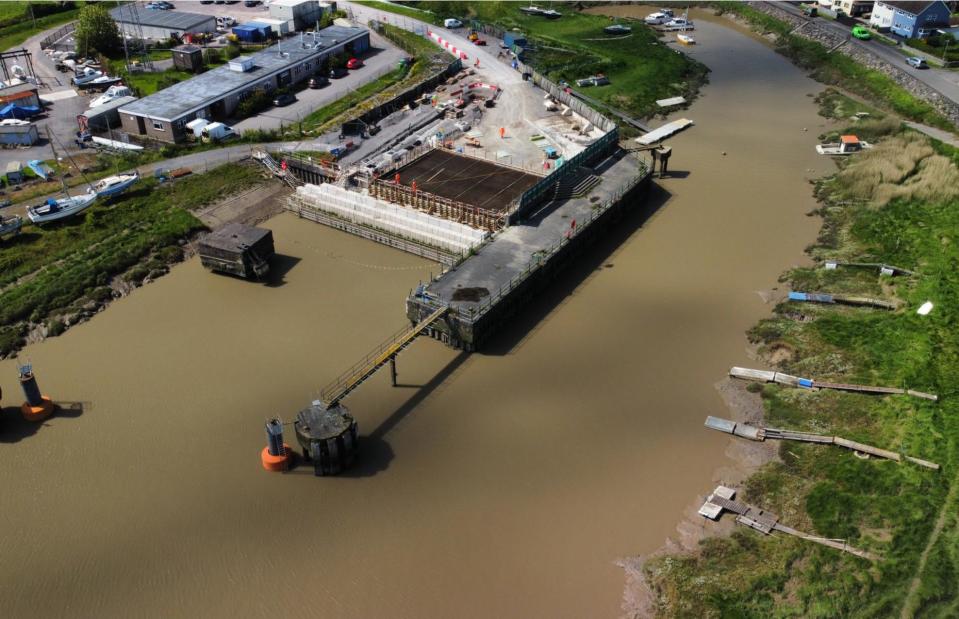
John Perrott/Shutterstock
As well as blowing its budget, Hinkley Point C is behind schedule.
The concrete base of the first reactor was completed in June 2019, while the base of the second reactor was finished, on time, in the summer of 2020. However, in a statement released in January 2021, EDF announced that it didn't expect Unit 1 to start generating electricity until June 2026, around six months later than its original target of late 2025.
Some of the construction delays stemmed from the pandemic when work was postponed to enable social distancing. By May 2022, EDF had pushed the deadline back even further to 2027, saying labour shortages and inflation were creating issues.
Hinkley Point C, UK
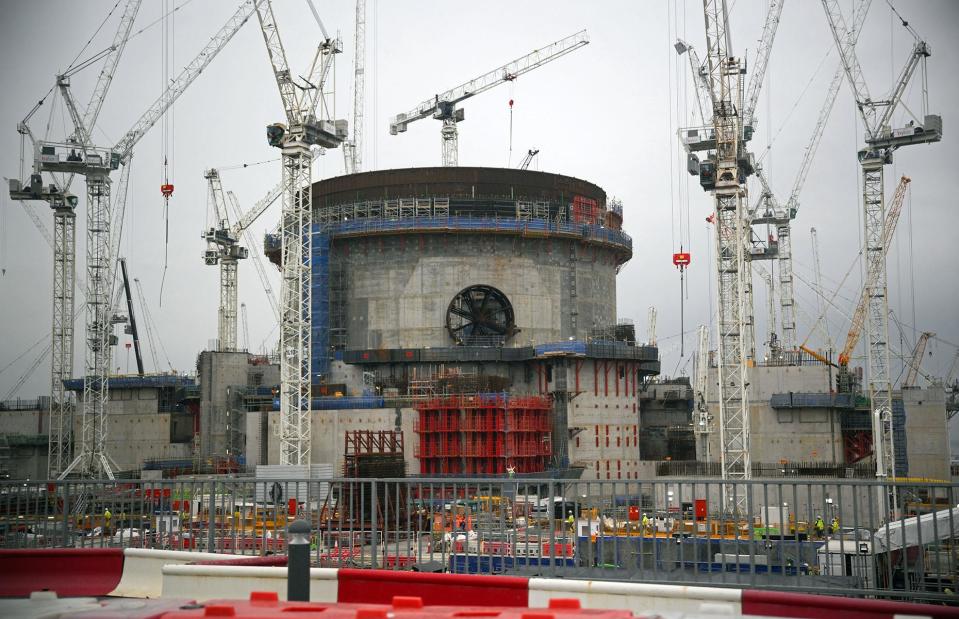
DANIEL LEAL/AFP via Getty Images
In 2023, the contractor started the final offshore work to install massive vertical shafts into the seabed and installed the 245-tonne steel dome that will cap the reactor – two major construction milestones. But it's not enough to meet the new deadlines and EDF is now saying it could be 2029 or even 2031 before the plant starts working.
Making matters worse, the final price tag estimated at £35 billion ($45bn) is uncertain and doesn't factor in inflation, which, considering the new delays, could drive the total cost to as much as £46 billion ($58bn).
Flamanville 3 nuclear reactor, France
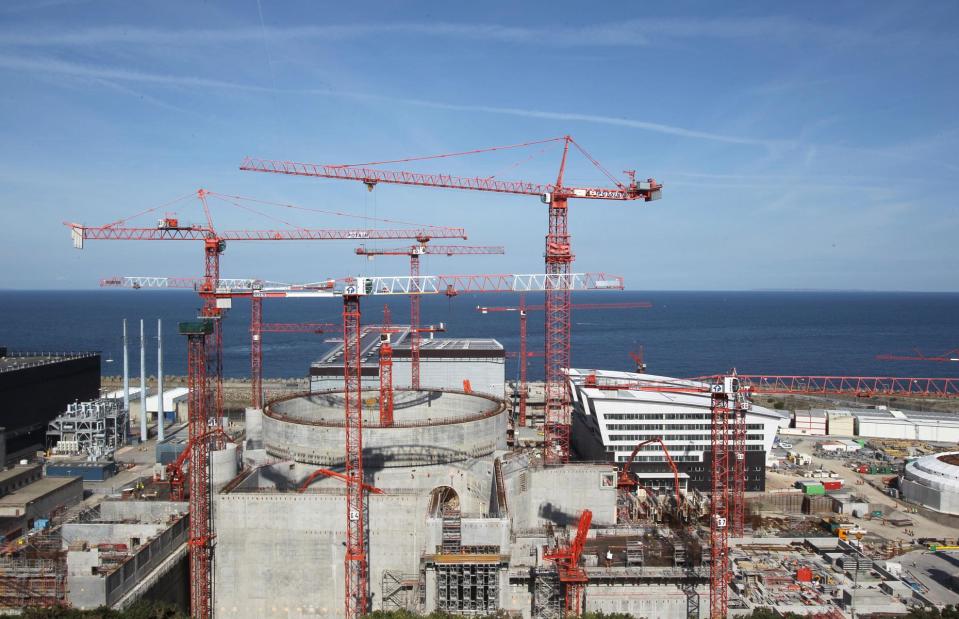
Kenzo Tribouillard/AFP/Getty
Construction began on a new reactor at the Flamanville Nuclear Power Plant in northern France in December 2007.
Owner and operator EDF originally budgeted €3.3 billion ($4.9bn/£3.9bn) for the project and said it would take 54 months (four and a half years) to complete.
Commercial operations were scheduled to start in 2012. Yet many problems ranging from safety concerns to equipment issues have put a major spanner in the works, delaying the project significantly and adding billions to the cost.
Flamanville 3 nuclear reactor, France
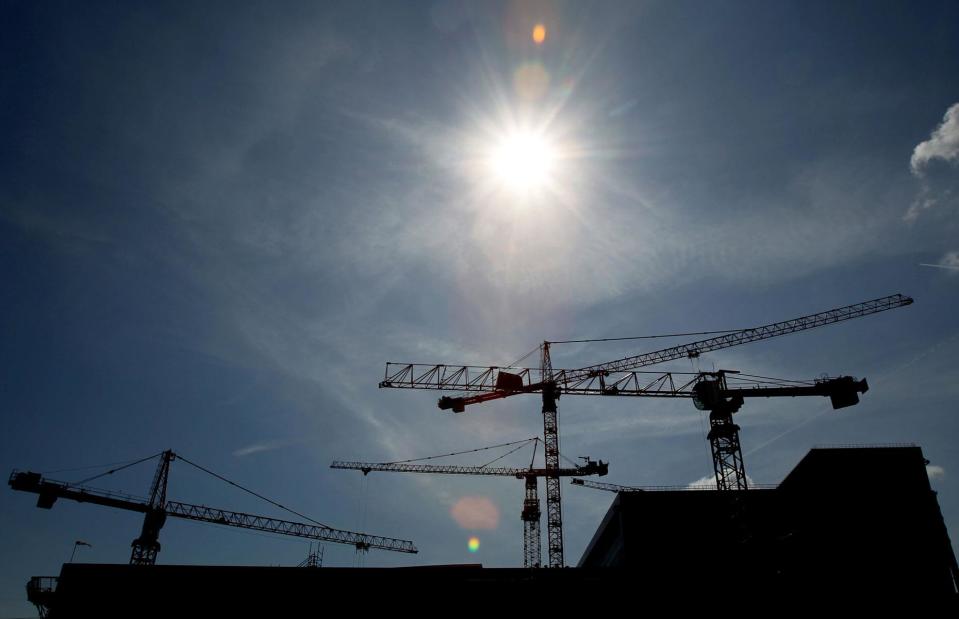
Kenzo Tribouillard/AFP/Getty
An initial decree from the French government stated that fuel loading at the new reactor must be completed within 13 years of the construction work starting in 2007. However, a new decree was published in March 2020 extending that initial deadline to April 2024.
The loading of fuel into the reactor was forecast to happen by the end of 2022, but this deadline was missed due to faulty welds and corroded safety valves. Instead EDF started the fuel loading in May 2024, officially launching an extended startup period that is expected to last several months. The plant could reach full power by the end of the year.
Flamanville 3 nuclear reactor, France
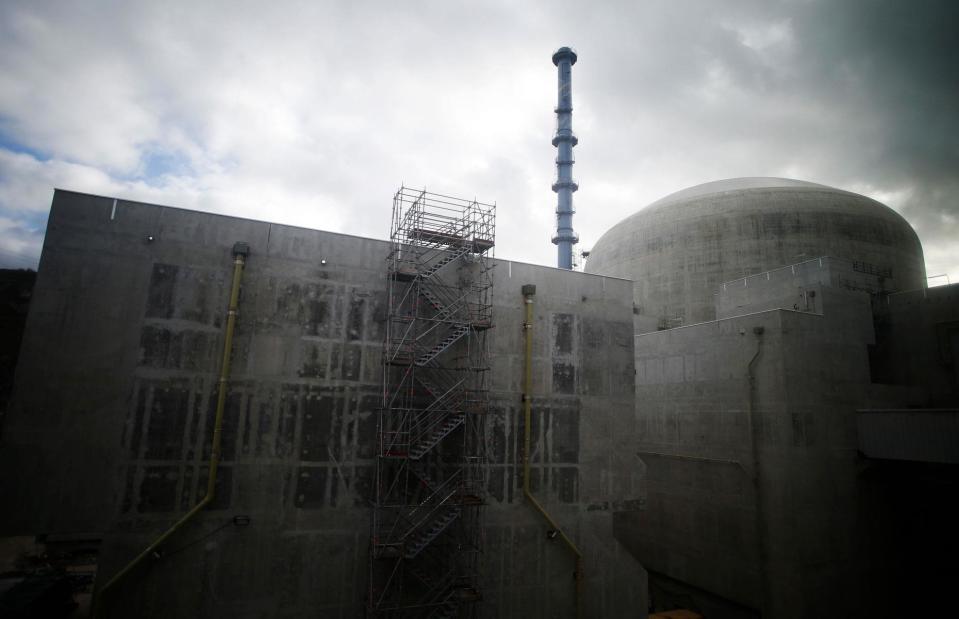
Charly Triballeau/AFP/Getty
With all of these complicated repairs and delays, the budget has increased accordingly. The reactor is now expected to cost the French energy firm €13.2 billion ($14.2bn/£11.4bn), marking an increase of nearly €10 billion ($10.7bn/£8.6bn).
Even though the project may be finally nearing completion, it will actually need to shut down shortly afterwards to replace a component of the reactor vessel to stay in compliance with French nuclear regulations.
Gulf Railway Line, Persian Gulf Countries
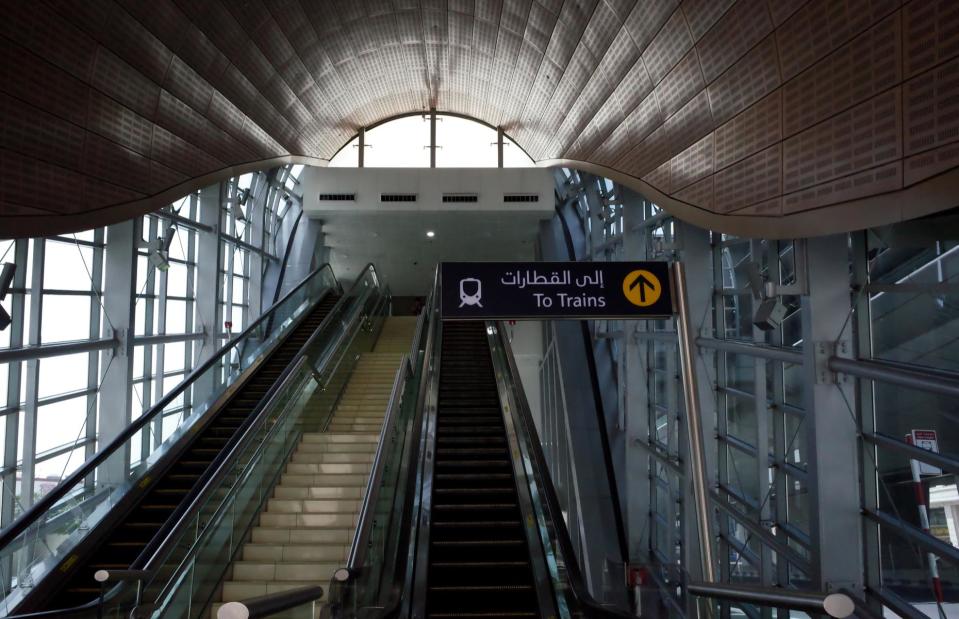
Arthur Matsuo/Shutterstock
Upon its completion, the Gulf Corporation Council (GCC) Railway Line will connect the six GCC member states: the United Arab Emirates, Saudi Arabia, Oman, Qatar, Kuwait, and Bahrain.
The total length of the track will be 1,353 miles (2,177km), with each state organising the construction of the project within its own territory. Plans were originally approved back in 2009. Original estimates suggested the line would cost around $14 billion (£10.5bn) and be operational by 2018.
Gulf Railway Line, Persian Gulf Countries
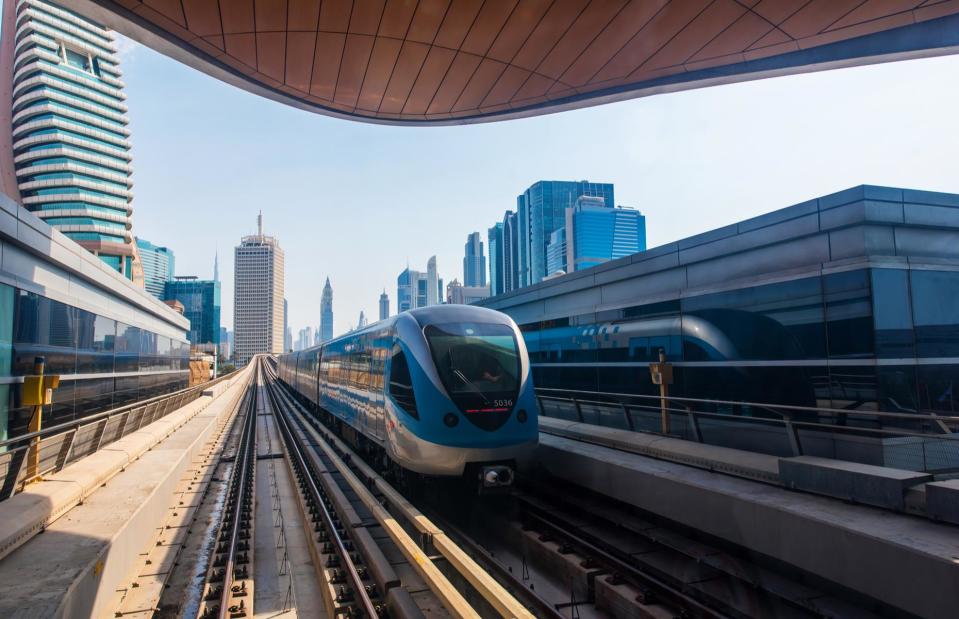
Kateryna Galkina/Shutterstock
However, that hasn't been the case.
By 2016, several partner countries had suspended work on their projects due to a lack of funds from the collapse of oil prices in 2014-2015. Dr Sulaiman al-Hamdan, the Minister for Transport in Saudi Arabia at the time, announced that a large portion of the project in his country had been completed. However, conflicting sources suggested the construction work hadn't even begun...
Gulf Railway Line, Persian Gulf Countries
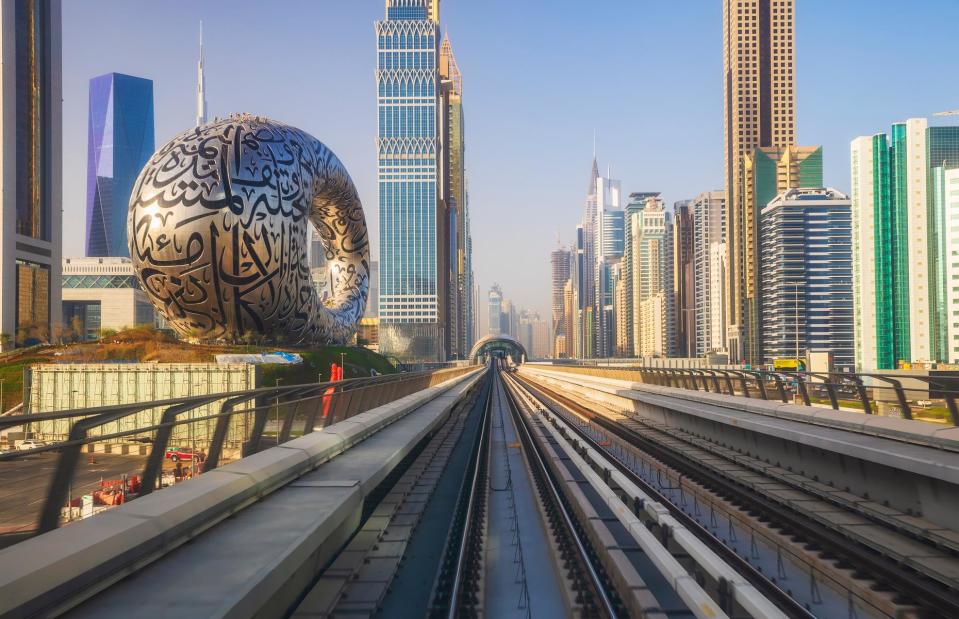
Aleksandr Melnikov/Shutterstock
Investment in railway infrastructure continued in some areas, though, with the UAE completing a 159-mile (256km) line between Dubai and Abu Dhabi. Then, in 2022, the GCC Railway Line found major momentum, with Saudi Arabia confirming it too had built 125 miles (200km) of rail for the project. Other countries have renewed their efforts to start construction and officials have recently agreed to finish the project by 2030.
The total cost of the project, which is split between the six involved nations, is now estimated at €197 billion ($213bn/£186bn), more than 15 times the original budget of $14 billion (£11.3bn).
The Line, Saudi Arabia
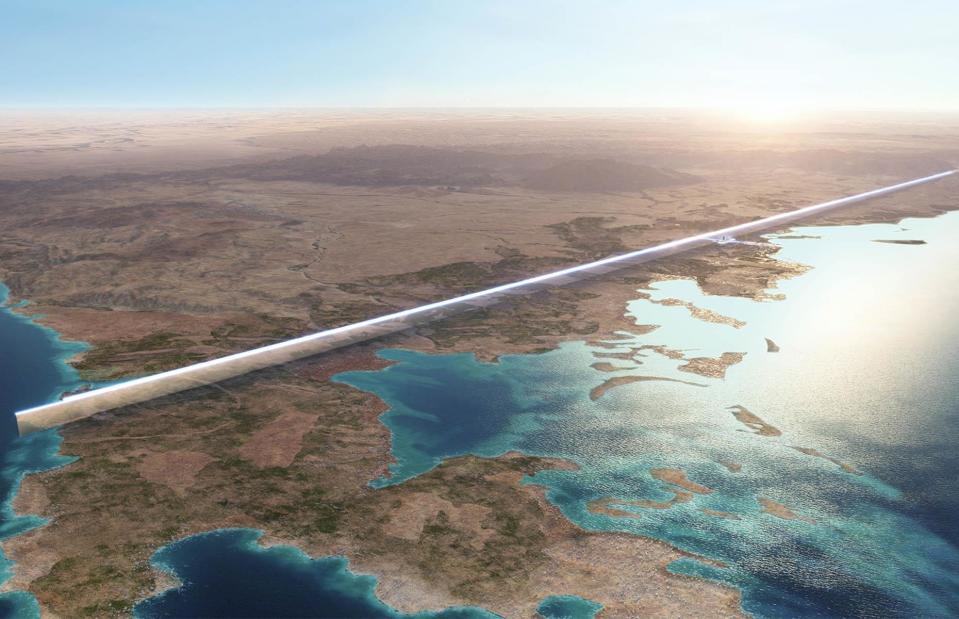
Courtesy Neom
With many calling it the world's largest construction project, it's no wonder Saudi Arabia's The Line, the centrepiece of its ambitious Neom project, is already facing the typical pitfalls of megaprojects.
The Line, living up to its name, debuted as a 656 feet wide (200m), 1,640-feet-tall (500m) mirrored city stretching 106 miles (170km) across the desert. An exercise in sustainability, it was slated to provide accommodation for 9 million residents, run on 100% renewable energy and be completely free of cars and streets.
This ambitious urban design, architecture, engineering and construction undertaking quickly drew criticism...
The Line, Saudi Arabia
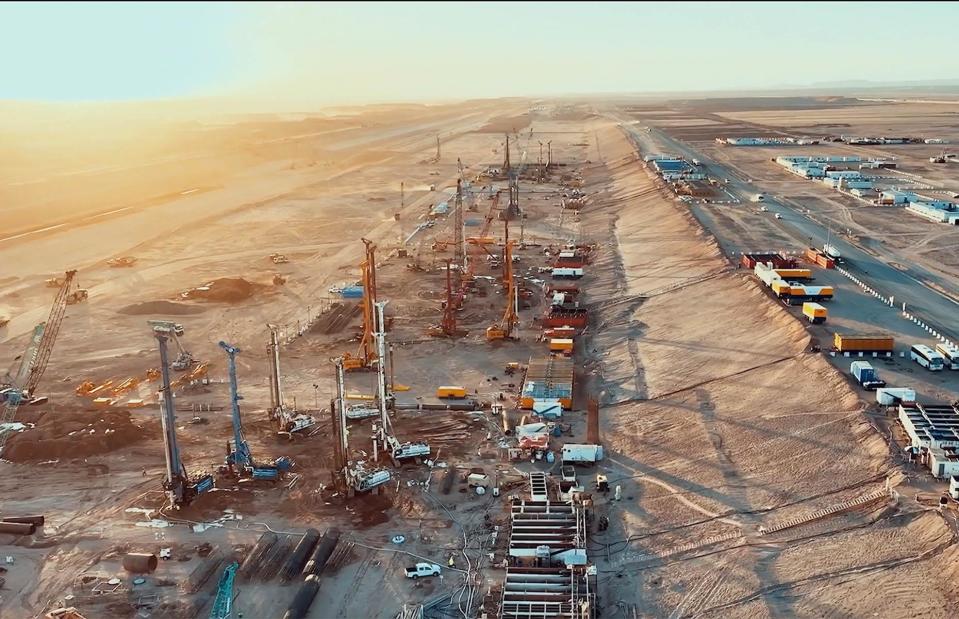
Courtesy Neom
Work started in 2022 to build underground transport that will run the length of the development and install foundations to support the city. However, a long list of experts feel the megaproject is unrealistic and unlikely to happen in its entirety.
Climate change is making the region Neom will inhabit too hot for humans, so building a metropolis in such an inhospitable location seems questionable. In addition, much of the technology required for the megaproject is unproven or hasn't even been invented yet.
In May 2023, one of the experts working on Neom, the British architect Peter Cook, called the height of The Line "a bit stupid and unreasonable", admitting that he thinks only a "bit" of the project will actually be completed. (As reported by Dezeen.)
The Line, Saudi Arabia
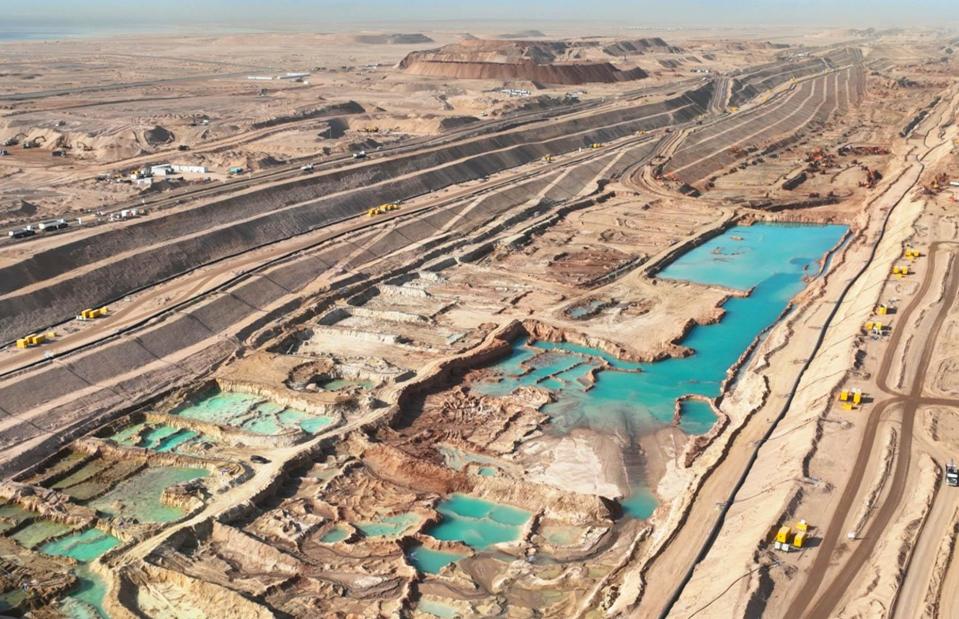
Courtesy Neom
While the total cost hasn't been confirmed, estimates have ranged from $100 billion (£79bn) to $1 trillion (£790bn).
The Kingdom has quietly scaled back the project amid rumours that costs are spiralling for the complex construction. Only 1.5 miles (2.4km) will be built by 2030, housing fewer than 300,000 residents, and accounting for less than 2% of the planned development.
Neom, the entity overseeing the megaproject, confirms this initial phase is still set to open on schedule. However, those close to the project are now putting the price tag closer to $2 trillion (£1.57tn). Most of the funding so far has been sourced from government coffers with foreign investors reluctant to get involved.
California High-Speed Rail, USA
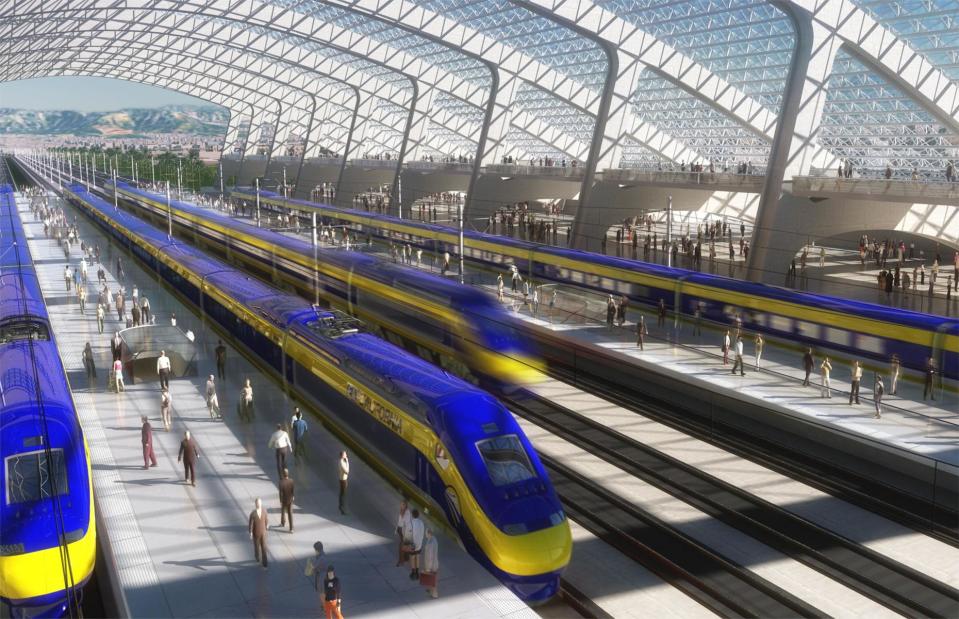
NC3D (Newlands&Company)
Since the early 1980s, California has been planning to connect the state's largest cities via a high-speed train line.
In a 2008 referendum, voters approved a $9.95 billion (£6.6bn) budget to begin construction of an 800-mile (1,287km) rail link.
With an estimated total cost of $40 billion (£32.3bn), the project promised to take travellers from Los Angeles to San Francisco in just two hours and 40 minutes.
California High-Speed Rail, USA
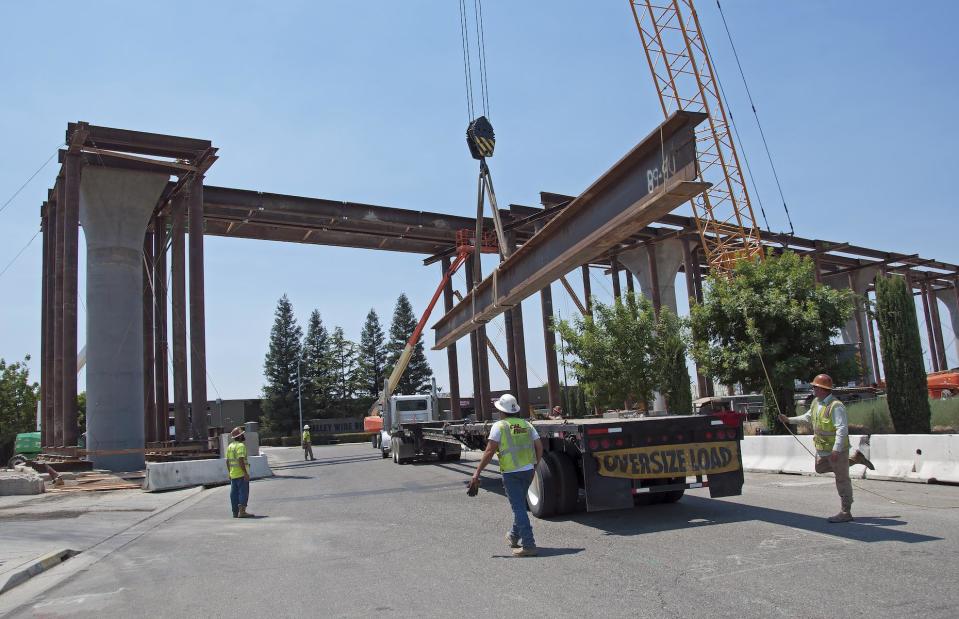
California High-Speed Rail Authority via Getty Images
However, the megaproject has been delayed by protests, lawsuits, and planning issues from the outset. Construction on an approximately 200-mile (320km) segment finally began in 2015, almost three years behind schedule.
Project costs had skyrocketed to $77 billion (£62bn) by 2019 when President Trump's administration cancelled a grant worth nearly a billion dollars. This was swiftly followed by the pandemic, which also resulted in cuts to funding. Though the election of President Biden in 2020 has proven to be good news for this megaproject – his administration reinstated the revoked funding – the costs keep mounting.
California High-Speed Rail, USA
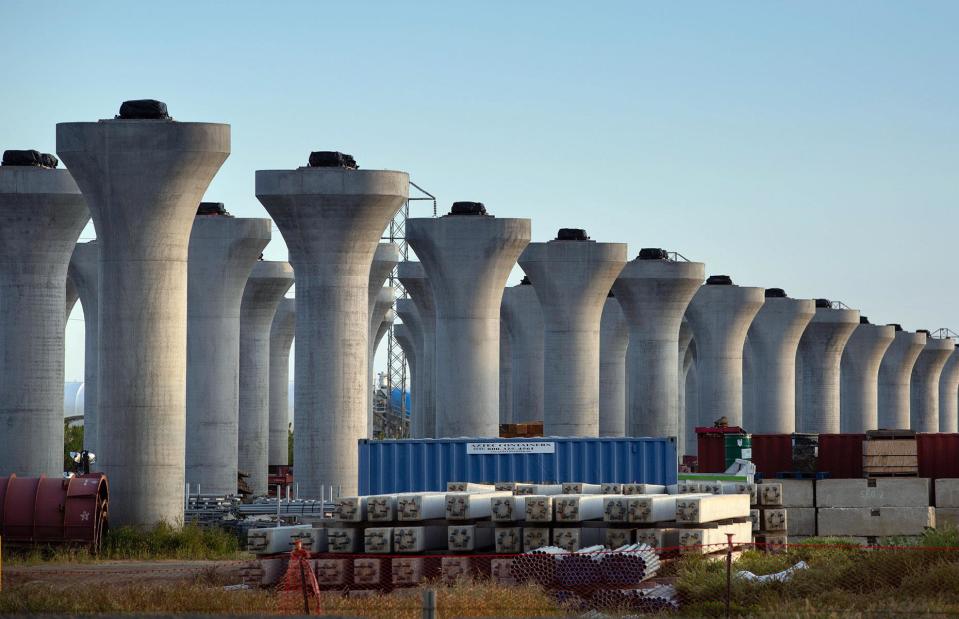
George Rose/Getty Images
In 2022, the California High Speed Rail Authority (CHRSA) released a business plan outlining a smaller project of only 500 miles (800km) with a much steeper final cost of $105 billion (£85bn), which increased to $128 billion (£103bn) the next year with no word on when the system will be ready.
As of March 2024, CHRSA maintains the initial 200-mile (320km) segment could be in service in 2030-33, but the price of the entire system is now projected to be nearer $135 billion (£106bn), a massive increase from the original $40 billion (£32.3bn).
HS2, UK
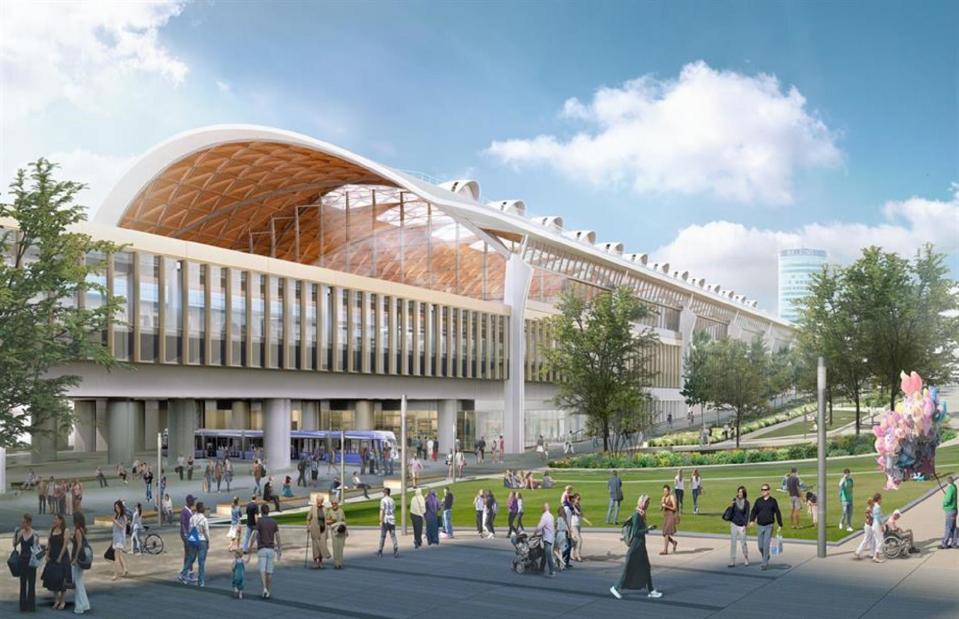
Courtesy HS2
High Speed 2, better known as HS2, is a high-speed railway line currently under construction in the UK. Initially, it was envisioned that the 330-mile (530km) railway would connect London to Northern cities, including Manchester and Birmingham.
The plan was originally proposed in 2009, with a route agreed upon the following year. Authorities announced that phase one of the megaproject, which would carry passengers between London and Birmingham in 52 minutes, would be up and running by 2026.
But more than a decade after the plans were first unveiled, work on the £33 billion ($41bn) railway has been derailed...
HS2, UK
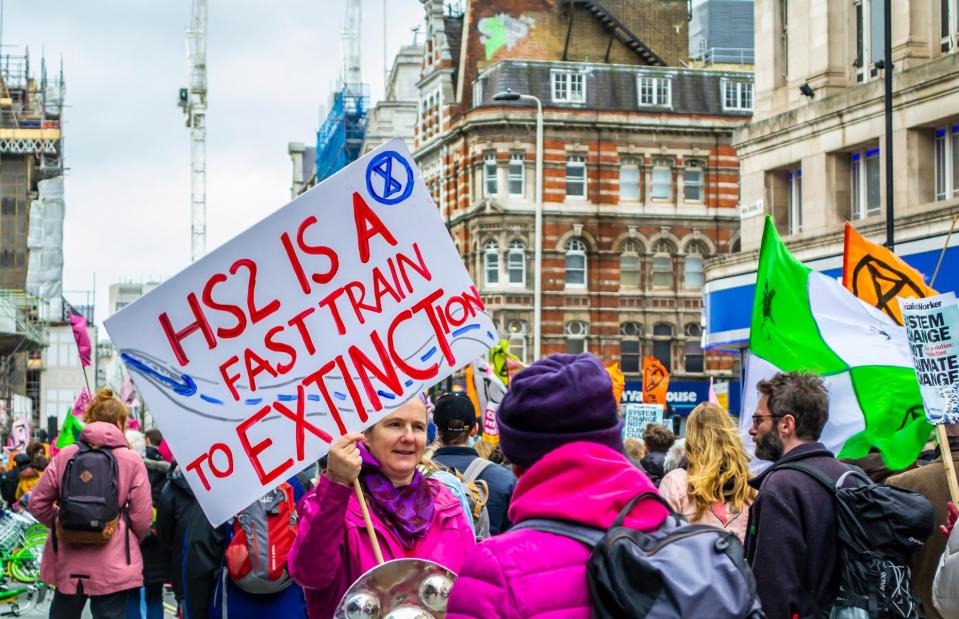
Jessica Girvan/Shutterstock
The controversial megaproject has been met with fierce opposition due to its environmental impact and eye-watering price tag. Construction of the railway line would destroy properties, businesses, and historic woodlands, and widespread protests have contributed to HS2's ever-extending timeline.
Meanwhile, unforeseen costs have caused the budget to balloon. Barely a month after construction officially began in 2020, the cost of the railway had already rocketed to £106 billion ($131bn) and the completion date of phase two had been rescheduled to as late as 2040.
HS2, UK

Christopher Furlong/Getty Images
The project has since faced the chopping block. A third phase – connecting London and the northern city of Leeds – has been scrapped entirely, with the government hoping to keep the price closer to £96 billion ($119bn). Prime minister Rishi Sunak then cancelled the northern section between Birmingham and Manchester in October 2023, saying the move would save £36 billion ($45bn).
It is estimated as much as £600 million ($736m) has been spent to buy land from farmers, businesses and homeowners on this now abandoned stretch of rail, The Times reports, noting that the land is costing the UK £50 million ($64m) a year.
Despite the shortened line, the total cost is now estimated at £66 billion (£84bn), three times the original estimate of £33 billion ($41bn), and the completion date has moved from 2026 to sometime in the next decade.
Now discover the huge underground megastructures abandoned to time

 Yahoo Finance
Yahoo Finance 